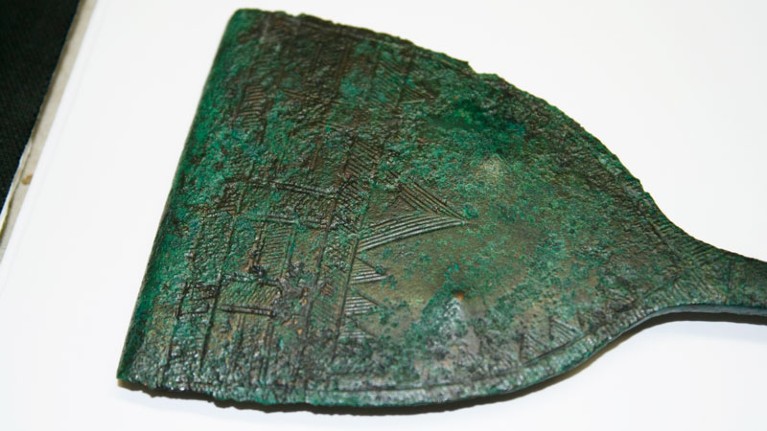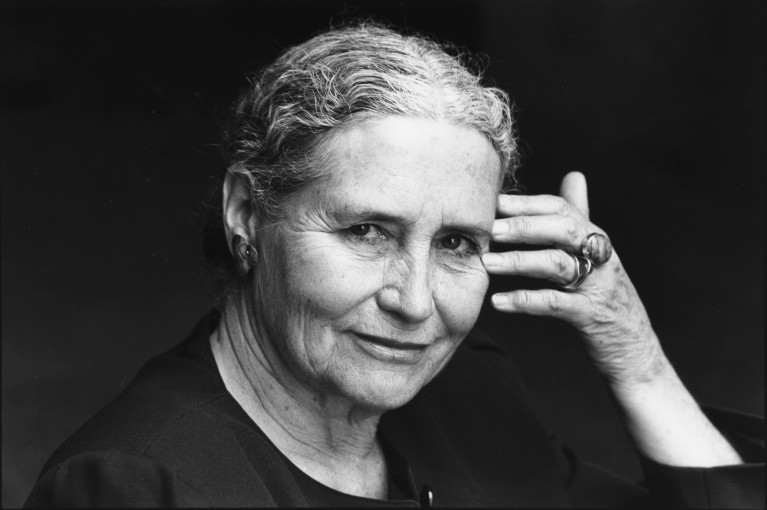Hello Nature readers, would you like to get this Briefing in your inbox free every day? Sign up here.

An ornate pin found in the burial of a woman at Königsbrunn, Germany, suggests the owner had a high social status.Credit: K. Massy
DNA reveals Bronze Age family ties
Archeologists have shed fresh light on a Bronze Age society by reconstructing the family trees of more than 100 people buried on ancient farmsteads in southern Germany. DNA reveals the social inequality within individual households, with high-status family members buried near unrelated, low-status individuals — possibly servants, farm workers or slaves. And the genealogies also unearth a mystery: some of the high-status women had no children or other blood relations in the group, and the levels of strontium isotopes in their teeth show they came from far-away lands.
California power outage affects labs
Scientists at the University of California, Berkeley, scrambled to save specimens and experiments that require refrigeration after the state’s largest utility company shut off power to reduce the risk of wildfires. The preventive outage follow a traumatic 2018 fire season: the company acknowledges that its equipment sparked the catastrophic Camp Fire, which killed 86 people. Many labs at UC Berkeley lack reliable back-up power, so some researchers have had to move their experiments off campus to save them.
“If they took [him] … there’s no hope for the rest of us.”
Geographer and former university president Tashpolat Tiyip has been missing since April 2017, caught up in China’s campaign against Uyghur and other mostly-Muslim ethnic minorities. After Amnesty International warned that Tiyip’s execution could be imminent — despite murky information about the allegations he’s facing — the American Association of Geographers wrote to the Chinese government to support his case. Tiyip’s detention has fed fear among fellow scientists, because he was an official in the Chinese Communist Party and had previously been lauded in the media as a role model.
FEATURES & OPINION
Morbus cyclometricus: the circle-squaring disease
Every scientific discipline has its catnip for cranks: physics has perpetual motion, medicine has homeopathy and mathematics has squaring the circle. Its status is legendary: “I hope my handwriting, etc. do not give the impression that I am just a crank or circle-squarer,” wrote Noble laureate John Nash in a 1955 letter to the US National Security Agency. Mathematician David Richeson explores the mesmerizing appeal of the geometric impossibility, from the Greeks to today.
Lapham’s Quarterly | 8 min read
Podcast: Estimating earthquake risk
A new method might be able to predict whether an earthquake will be followed by smaller aftershocks — or whether worse is to come. Seismologist Stefan Wiemer tells the Nature Podcast about the traffic-light system he developed for the predictions, and the system’s many caveats.
Nature Podcast | 23 min listen
Go deeper with the expert analysis in the Nature News & Views article.
Subscribe to the Nature Podcast on iTunes, Google Podcasts or Spotify.
BOOKS & ARTS

Doris Lessing, photographed in 1990.Credit: Schiffer-Fuchs/ullstein bild via Getty
Doris Lessing at 100: roving time and space
On the centenary of the Nobel laureate’s birth, biographer Patrick French explores Doris Lessing’s science-infused series Canopus in Argos. The space-based books still divide readers, but they embody her lifelong interest in science and societal upheaval in fascinating ways, writes French.
Five best science books this week
Barbara Kiser’s pick of the top five science books to read this week includes psychedelic psychiatry, breast cancer, and a paean to the emperor penguin.
